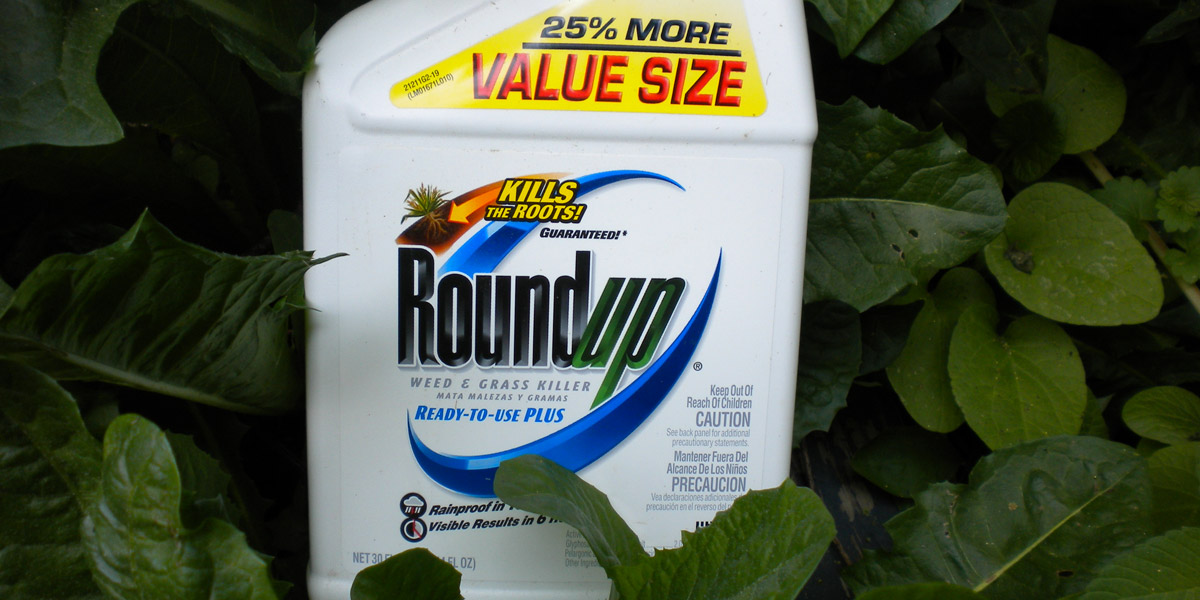
Effects found on sexual development, genotoxicity, and the intestinal microbiome
Glyphosate-based herbicide caused adverse health effects in rats at a dose claimed to be safe by regulators, according to a new study. Glyphosate herbicides are used on the vast majority of GM crops worldwide.
The study used the US Environmental Protection Agency’s acceptable daily dietary exposure level of glyphosate(1) – 1.75 mg per kg of bodyweight per day. The same concentration was given to the rats daily over a 3-month period.
The study was focused on the newborn, infancy and adolescence phases of life. The results reveal that glyphosate-based herbicide (GBH) was able to alter certain important biological parameters, mainly relating to sexual development, genotoxicity, and the intestinal microbiome.
The effects occurred at a dose deemed safe by regulators to ingest on a daily basis over a long-term period. In human-equivalent terms the dosing period corresponded to the period from the embryo stage to 18 years of age.
Results in detail
The results showed an alteration in some sexual development parameters in rats treated with GBH, especially in females. Moreover, rats treated with GBH presented statistically significant changes of the intestinal microbiome in particular during development.
Concerning genotoxicity, a statistically significant increase was observed in micronuclei in rats treated with GBH, especially in the first part of life.
Rats treated with pure glyphosate or its formulation presented similar levels in urine of glyphosate and its principal metabolite (AMPA), thus showing no significant difference in the absorption and excretion of glyphosate among the two treatment groups, but suggesting a bioaccumulation effect of glyphosate that was proportional to the length of treatment.
The study was conducted at the Ramazzini Institute, Bologna, Italy. In over 40 years of activity, the institute has studied more than 200 compounds fro m the general and occupational environment and many of its results have provided a solid scientific base forregulating and limiting the exposure of a number of substances. Examples include vinyl chloride, benzene, formaldehyde, trichloroethylene and mancozeb.
Comments from scientists
Commenting on the glyphosate herbicide pilot study, Prof Philip J. Landrigan, Icahn School of Medicine at Mount Sinai, said, “By its very nature and purpose, the pilot study does not resolve the uncertainties puzzling the various agencies (IARC, EFSA, ECHA) as to whether glyphosate and Glyphosate Based Herbicides (GBHs) are carcinogenic or not, but it does highlight health effects that are equally as serious, that might manifest as long-term oncological pathology [cancer], and that might affect a huge number of people, given the planet-wide use of the GBHs. These early warnings must be further investigated in a comprehensive long-term study”.
Dr Fiorella Belpoggi, Cesare Maltoni Cancer Research Center, Ramazzini Institute, said,“Whatever the outcome of the Ramazzini Institute study, the findings will provide regulatory agencies and policymakers with solid independent results obtained by a shared research project on which they can confidently base their risk assessments and their evaluations, includi ng the upcoming decision for the reauthorization for glyphosate use in Europe in 2022."
Prof Jia Chen, Icahn School of Medicine at Mount Sinai in New York City, said, “Glyphosate-based herbicides (GBHs) are of significant public health concern because of their widespread and sharply increased usage. As an herbicide, glyphosate exerts its herbicidal action by inhibiting the Shikimate pathway which exists not only in plants but also exist in some bacteria and fungi and other microbes. However, there are no studies on the potential effects of GBHs on the gut microbiome in the human population.
"Our study provides initial evidence that exposures to commonly used GBHs, at doses considered safe, are capable of modifying the gut microbiota in early development, particularly before the onset of puberty. Further long-term investigations are necessary to elucidate if the shift in the microbiota induced by GBHs exposure is contributing to the other health effects downstream. Nevertheless, understanding the microbiota changes during this critical window of susceptibility could be of great importance for disease prevention”.
Dr Alberto Mantovani, Italian National Institute of Health, said, “An interesting feature is the time-related increase of unchanged glyphosate in the urine. This finding might indicate that glyphosate bioavailability increases with a longer duration of exposure; increased bioavalability, in its turn, might flag an increased internal exposure of target organs and tissues.”
Publication and funding
Three peer-reviewed accepted manuscripts from the pilot phase of the Global Glyphosate Study are available online today (May 16) today. They will be published in the prestigious scientific journal Environmental Health in open access format later in May. The data on reproductive parameters and genotoxicity is currently in peer review and is soon to be published.
The pilot study involved the participation of multiple institutes and universities in Europe and the US. The study cost €300,000 and was funded by 30,000 members of the public in Italy, who are associates of the Ramazzini Institute cooperative.
A crowd-funding campaign(2) has been launched to help support a long-term comprehensive Global Glyphosate Study, which following these results is now urgently required.
Notes
1. US Environmental Protection Agency (EPA). Glyphosate: Chronic Dietary Exposure Assessment for the Section 3 Registration Action. 2006. https://www3.epa.gov/pesticides/chem_search/cleared_reviews/csr_PC-103601_8-May-06_a.pdf
2. Global Glyphosate Study: http://glyphosatestudy.org/










